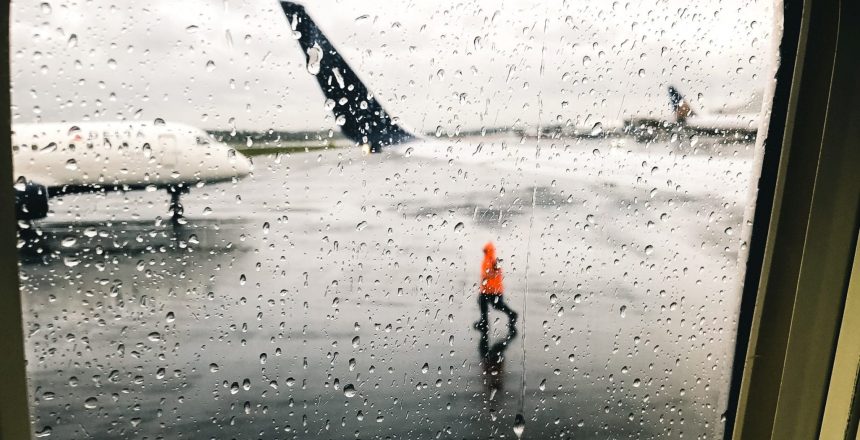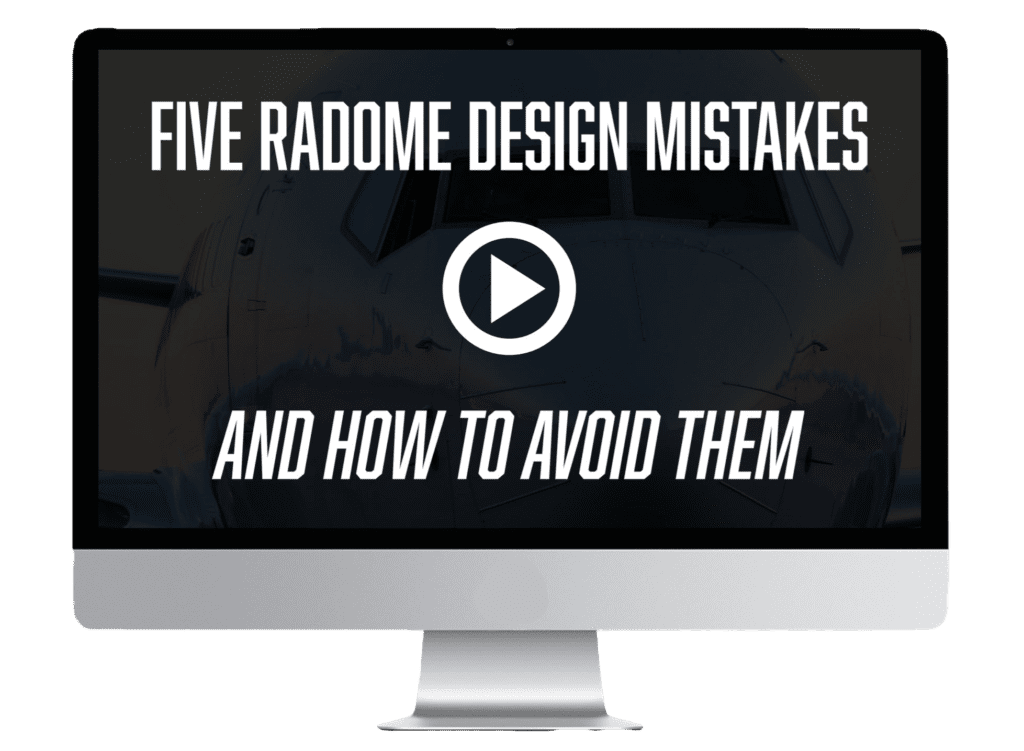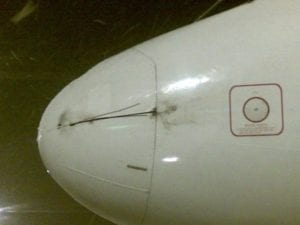Rain erosion is a common cause of aircraft lightning diverter failure, risking damage to the planes they’re supposed to protect. But, is this preventable? What can airplane owners do to protect themselves?
Why Many Aircraft Lightning Diverters Fail: Rain Erosion
Lightning diverters have a big job to do: they are expected to protect sensitive radar equipment on the front of an aircraft traveling hundreds of miles per hour in all weather conditions.
They have to be light, thin, and aerodynamic.
And, they have to divert up to one billion volts and up to 250,000 amps.
This is a tough task for a small, somewhat overlooked aircraft part.
Yet, Aircraft Lightning Diverter Failure is NOT Usually Due to Lightning Itself.
The numerous lightning diverter strips on the radome of a plane will be abused by rain, snow and sleet at hundreds of miles per hour.
It’s an extreme environment, one that demands superior craftsmanship and materials to even stand a chance.
Factors Affecting Durability of Lightning Diverters
The main factors that contribute to diverter durability and effectiveness are materials, design, and installation (or application). It bears repeating: there is no substitute for quality (and experience), for any of these factors.
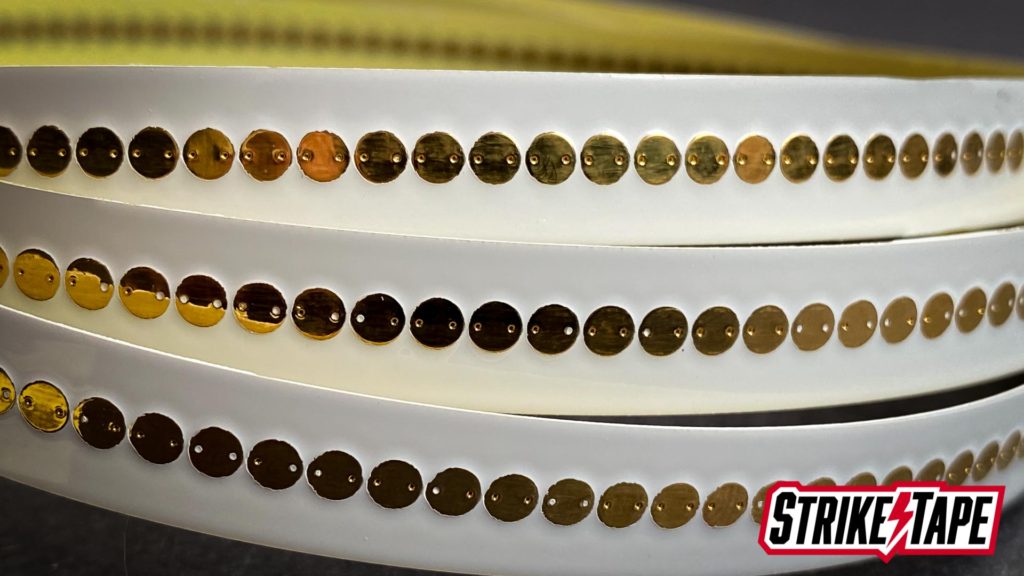
Material selection and treatment is essential to manufacturing diverters that are durable and able to withstand the rain, snow, and other environmental elements they will be exposed to in flight. We rely on our test data, again, because we are confident in the quality of those tests and the labs in which they are conducted. Like you, when it comes to certifying parts, we want to know the answers to the questions we’ll be asked – before those questions are asked.
Questions about our materials testing data? Contact us.
What design provides the best protection? Aircraft models and their components vary so much, when it comes to design, experience is invaluable. We understand aircraft environments and how different materials perform under different stresses. Do you need help finalizing your design? We’re here to answer your questions.
How you apply your diverter to your radome or other part affects the diverter’s durability and effectiveness, too. The best technology is no good if it isn’t durable in real-world conditions. This is why we routinely walk our customers through the installation process and find the perfect part and application for them.
Rain Simulations Show That Low-Quality Lightning Diverter Strips Erode–and Fail–Quickly.
The photo below shows clearly that the manufacturing process and the quality of materials is critical in protecting aircraft from lightning strikes. Our StrikeTape diverter on the right is intact after a 300mph rain simulation test, whereas our competitors’ is destroyed and missing segments.
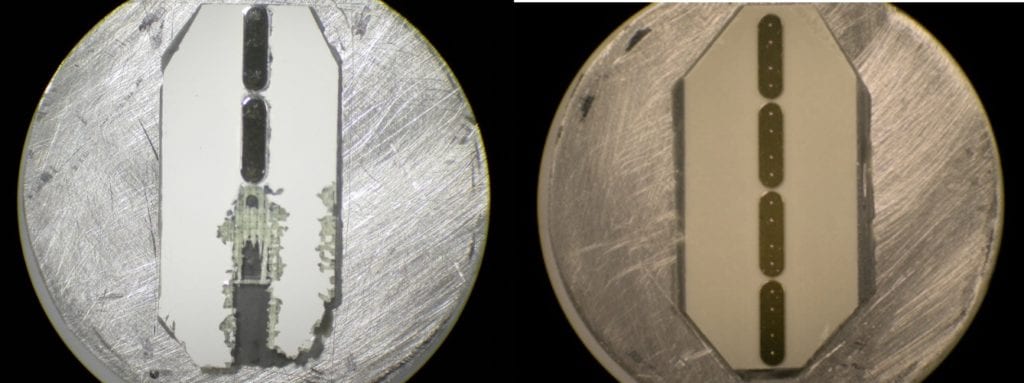
Weather Guard StrikeTape lightning diverters didn’t just outperform standard diverters in rain erosion simulations, they crushed them. We have the data to prove it, from research commissioned at the University of Limerick.
What every fleet operator needs is simple: planes in the air, generating revenue by moving people and cargo.
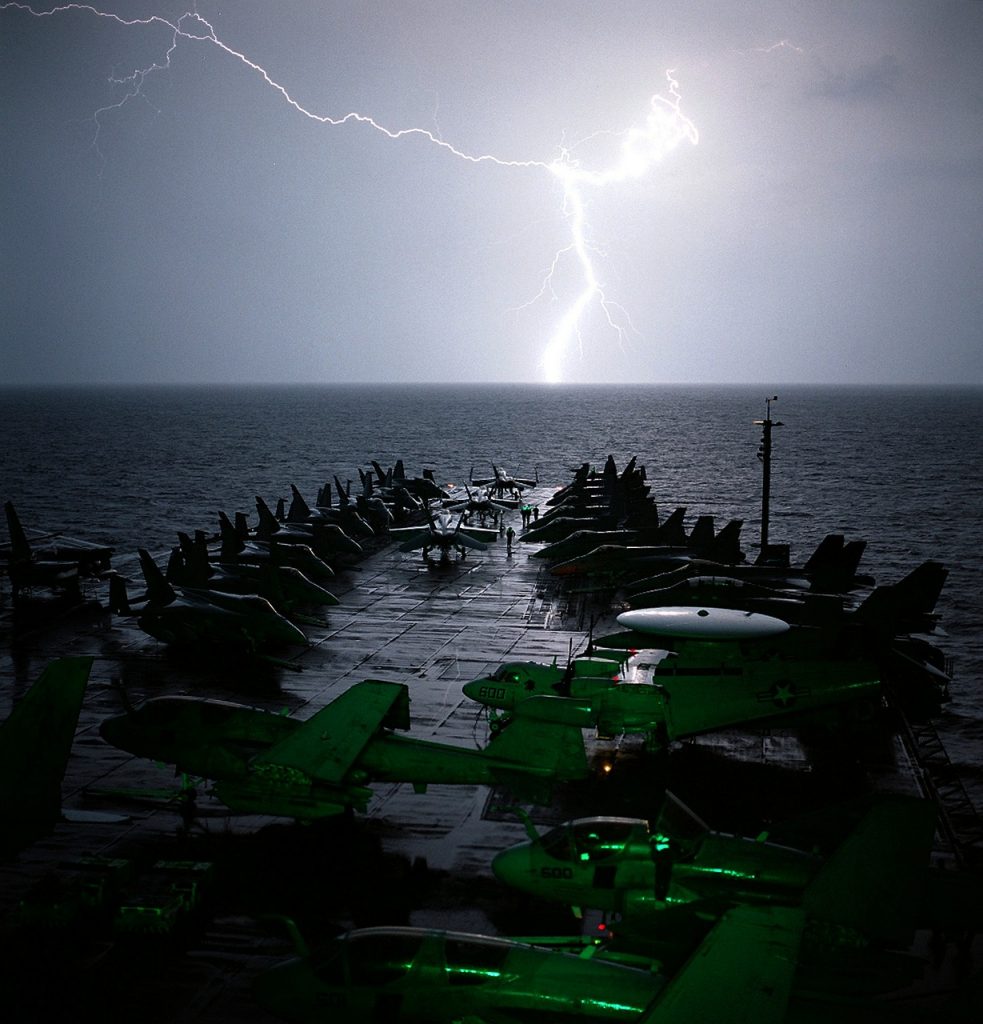
High-quality lightning diverters provide long-lasting, superior protection for expensive and difficult-to-fix radomes and radar equipment.
Lighting Protection is a FAA and EASA Compliance Issue.
Inadequate or damaged lightning protection will cause a plane to be out of FAA or EASA compliance.
Cheap- and low-quality diverters put aircraft at risk, forcing them back into the hangar for repairs. Either way, you’re looking at downtime and lost revenue.
At Weather Guard, we only make extreme-duty lightning diverters.
At Weather Guard, we make extreme lightning protection that will save your aircraft from the world’s most destructive environments, and–most importantly–get everyone home safely.
There is no substitute for quality – in anything, really, but especially in aviation and aerospace component design. materials, design, testing, and installation.
What Do Operators Need to Keep Their Planes and Helicopters in the Air?
If you’re having difficulty finishing the design of your aircraft’s lightning protection system, be sure to include the highest quality lightning diverter strips on the market–StrikeTape–in your design.
Damaged Lightning Protection Systems (LPS) can be a maintenance nuisance. Because they can keep your aircraft grounded, they become very costly. Many complex radomes and antennas can’t be repaired, and so protecting them is essential.
Rain Erosion of Lightning Diverter Strips
Aircraft lightning diverter failure is often not caused by lightning damage itself, but rather by rain erosion.
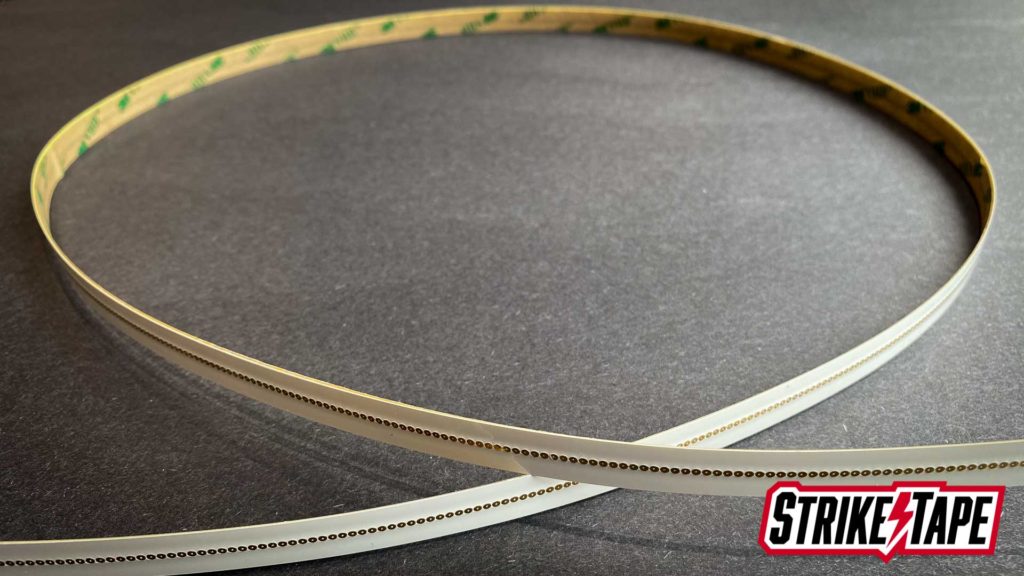
Rain erosion failures are extremely common in standard lightning protection devices that rely on “standard” materials and construction. Unfortunately, the “standard” cost-saving options can equate to weak links that will break an otherwise durable chain.
Superior build-quality yields superior resistance to rain erosion, affording you, your part, your plane and its systems and cargo, greater protection.
StrikeTape extreme lightning protection has research-proven durability in the most extreme conditions, outlasting the competition by years, not months.
Invest in the Best. StrikeTape Lightning Diverter Strips Protect Your Aircraft in the Most Extreme Conditions in the World.
If you’re fed up with aircraft lightning diverter failure and are using standard-quality segmented diverters, call us.
We’re dead serious about protecting your fleet in the harshest conditions. We love helping radome engineers, so give us a call today.

